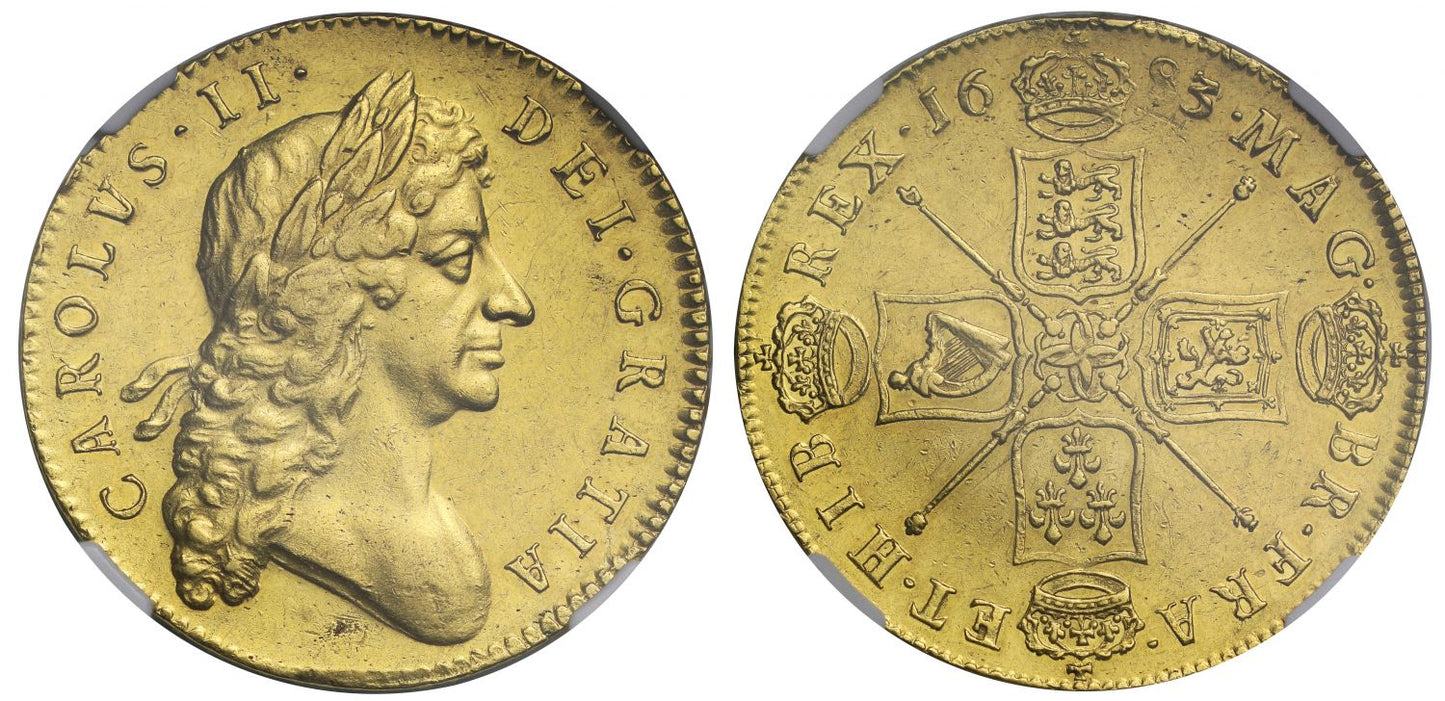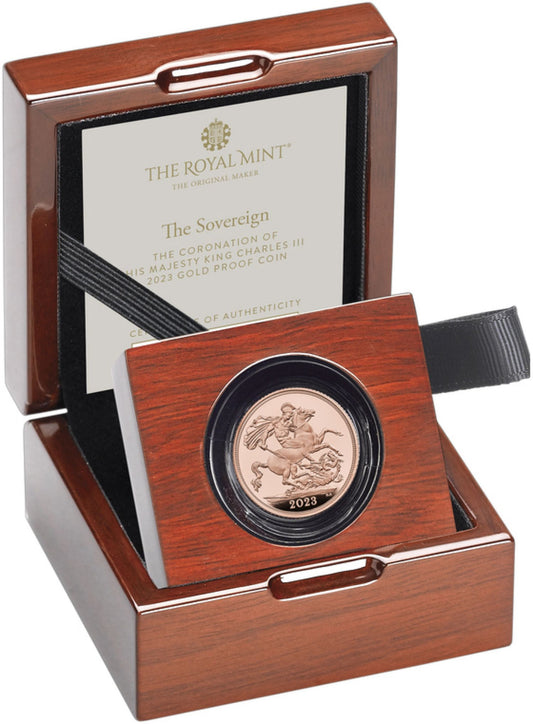FAQs
What makes a coin valuable?
I have coins to sell, what’s the next step?
How will my purchases be shipped?
What happens if I’m not entirely happy with my purchase?
Charles II 1683/2 Five-Guineas finest currently graded at AU55
Charles II (1660-85), gold Five Guineas, 1683, 3 struck over 2, second laureate head right, Latin legend and toothed border surrounding, CAROLVS. II. DEI. GRATIA, rev. crowned cruciform shields, sceptres in angles, four interlinked Cs at centre, date either side of top crown, Latin legend and toothed border surrounding, MAG. BR. FRA. ET. HIB REX., edge inscribed in Latin raised letters, .+ DECVS.ET. TVTAMEN. ANNO. REGNI. TRICESIMO. QVINTO. + (Schneider -; MCE 27; S.3331). Some light haymarks mainly on obverse, otherwise lightly toned, has been slabbed and graded by NGC as AU55 the finest graded of date and variety.
NGC Certification 4863866-001.
According to the population reports at both PCGS and NGC this coin is the finest graded of all the 1683/2 labelled Five Guinea pieces by two whole grades. This coin is also one of the finest graded of this date at both services as there is only one other labelled 1683 graded at 55 at each of the services and only ten pieces have been graded in total for the date as a whole across both services.
"The Rarity of Five Guinea Pieces - An Analysis" appeared in the preface of the Samuel King Collection of Highly Important English Gold Coins sold at Spink on 5th May 2005 co-written by the present cataloguer. The analysis showed that over a 45-year period preceding 2005, since 1960 that 55 examples of the Five Guineas dated 1683 plain below bust had been bought or sold in numismatic commerce, which put it in 5th place amongst the Charles II dates most frequently traded. Though it was not possible to break this down between overdate and straight date. This demonstrates some degree of good survival from that period when the King Analysis figures are compared to gold outputs of the reign of Charles II as there was only £369,317 worth of gold struck in the calendar year 1682 which is the third largest output of the reign. Though of course we do not know how the output would be broken down between the gold denominations nor how long a date on a coin die would have lasted into a following calendar year.
The abbreviated Latin legends translate as on the obverse "Charles by the Grace of God," and on the reverse as "King of Great Britain, France and Ireland"; additionally on the edge as "An ornament and a safeguard, in the 35th year of the reign." The edge years for Charles II were counted as if he had reigned since the death of his Father Charles I in 1649.
FAQs
What makes a coin valuable?
I have coins to sell, what’s the next step?
How will my purchases be shipped?
What happens if I’m not entirely happy with my purchase?













